-
Notifications
You must be signed in to change notification settings - Fork 2
Getting Started with Minicloud
In this tutorial you'll learn all the basic steps to sucessfully create and login into a virtual machine in your minicloud account.
The first visible screen of our dashboard is the Overview. It shows all the relevant information of our project. The Instances tab shows our project's virtual machines. Images tab shows the available images to be used and Access & Security has project's security groups, public keys and firewall rules. Feel free to explore the remaining tabs.

First thing we have to do is adding our public key to our project. That way, when a virtual machine is created, our public key will be automatically added to it's authorized keys and we'll be able to login. It's a very simple process. In Access & Security tab, click on Key Pairs. You'll have two options: Import a key pair or create one.
Clicking on "Create Key Pair" will pop the screen below:

After typing a good name for your public key (easily identifiable), it will be downloaded to your machine in *.pem format. Remember to move it to a place easy to remember. By default, all public keys are stored at ~/.ssh.
If you choose to import an existing public key, you have to copy the contents of your *.pub key to the Public Key field.
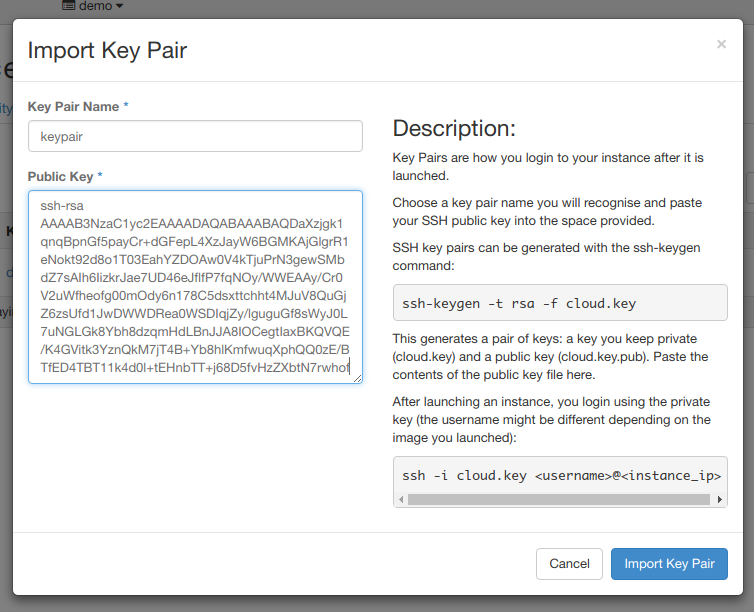
Since is not possible to select multiple keys for a VM, you can add as many keys as you want in this field, and all of them will be valid when trying to login later.
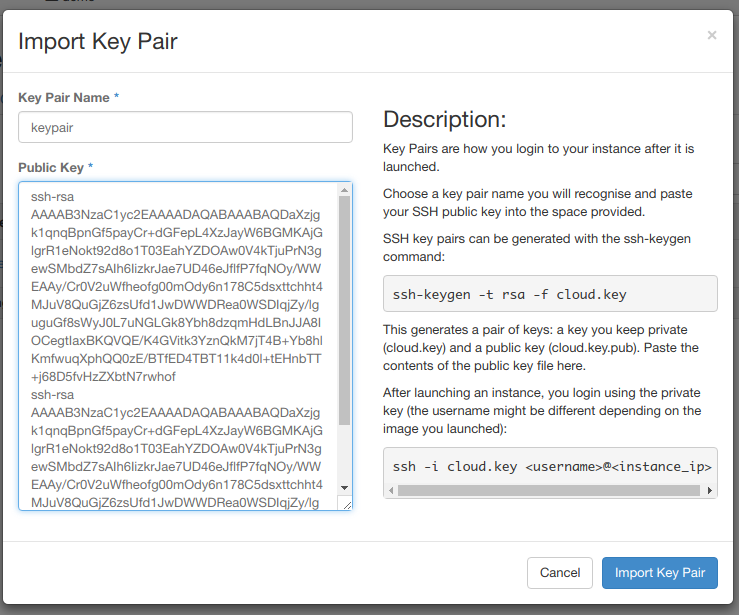
Go to Compute and click on Images tab. Pick a image by clicking in it's respective Launch a instance button. In Flavor you can specify which kind of machine you want and in Instance Count you can specify the number of instances you want to create. In this example, we'll create one m1.tiny Ubuntu machine.
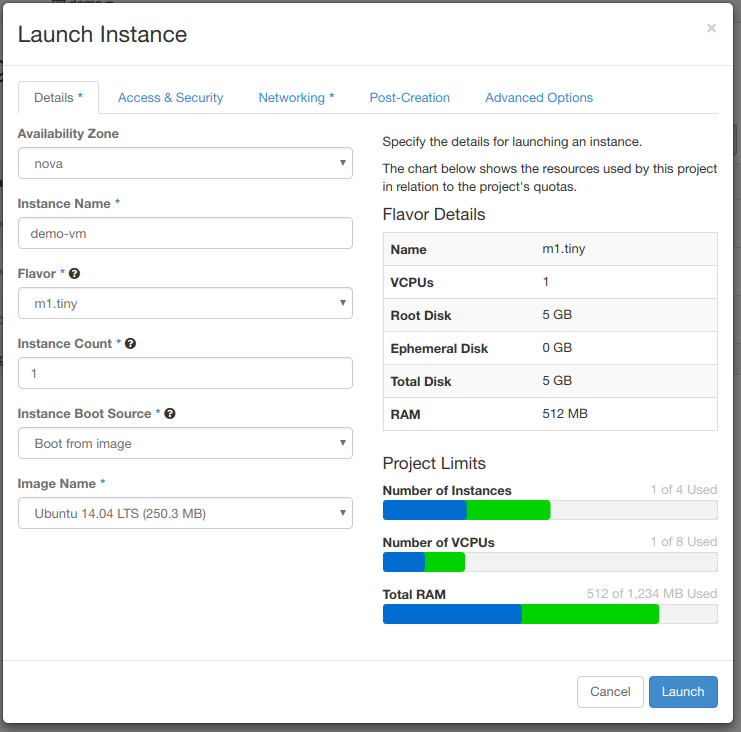
In Access & Security tab we select which key pair will have access to the instance we're creating and select the default group. After selecting your key pair, go to Networking tab.
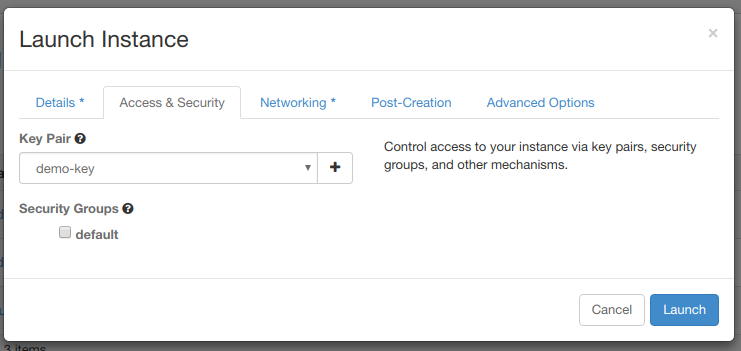
Now drop to Selected Networks box all networks that you want your instance to be part of. Since we've created only one network, it'll be selected automatically.

Post-Creation and Advanced Options tabs are optional.
In Instances you'll see that now our instance shows up. In Actions, click on the dropdown menu and select Associate Floating IP.
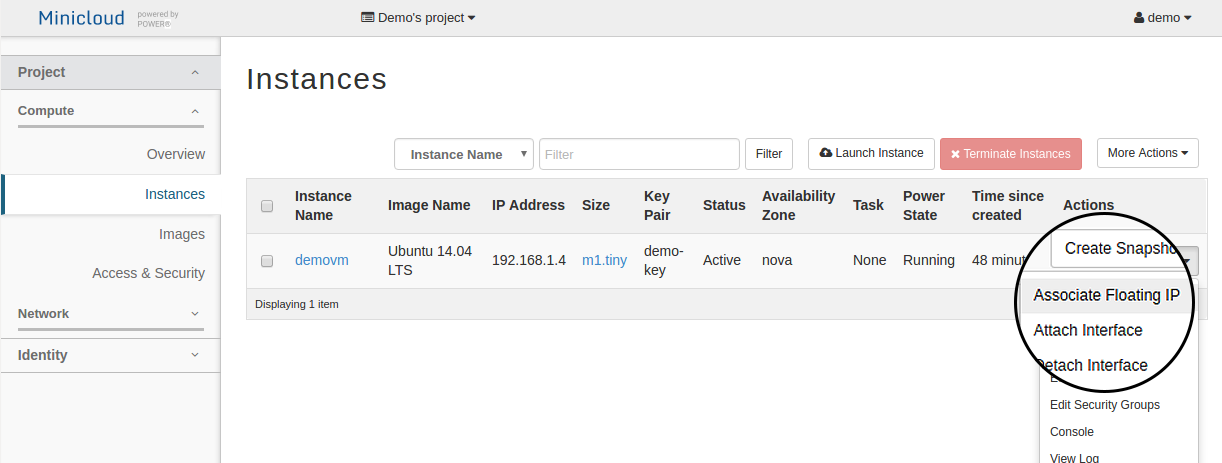
The associated IP address will be shown.

To access the virtual machine via SSH, if the associated IP is 10.3.W.XYZ, we'll use the port 2WXYZ.

After associating an IP, wait 5 minutes before connecting via SSH
So, in the above example, we would connect with:
ssh [email protected] -p 21023 -i demo-key.pem
For other OSs, change the username accordingly:
| Image(s) | Command |
|---|---|
| CentOS | ssh [email protected] -p 2WXYZ -i your-key.pem |
| Debian | ssh [email protected] -p 2WXYZ -i your-key.pem |
| Fedora | ssh [email protected] -p 2WXYZ -i your-key.pem |
| Ubuntu | ssh [email protected] -p 2WXYZ -i your-key.pem |
OpenPower Lab | Unicamp